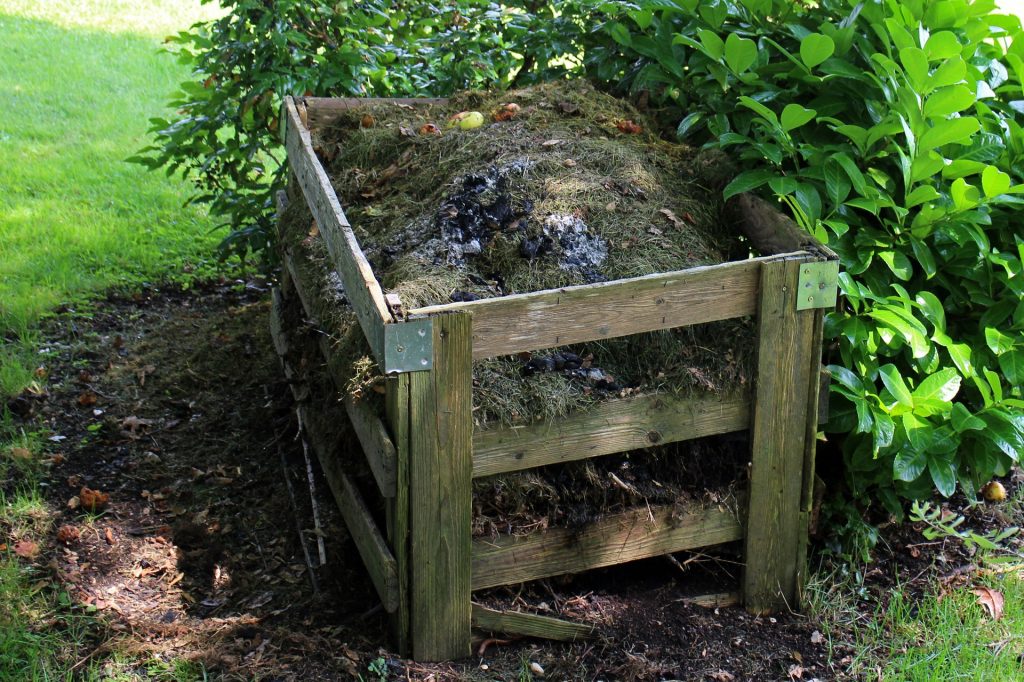When you want to enrich your garden soil, but you avoid commercial, chemical fertilizers, the natural solution can be found right at home with a compost pile. Fed kitchen scraps and yard litter, your compost pile will yield a crumbly, dark, nutrient-rich material that gardeners call “black gold” for good reason: it contains nutrients beneficial to plants, helps soil retain those nutrients, increases soil’s water capacity, and attracts valuable earthworms to your garden.
A compost pile’s bacteria and other microorganisms generate heat when they digest organic material and turn it into compost. You may choose to let nature do all the work with a slow-acting “cold” compost pile or you can hurry the process along by creating a more labor-intensive “hot” compost pile.
If you opt for the hot method, start by planning for a large pile, because it holds heat better than a small one. Your best option is a pile about 4 or 5 feet wide, long, and high.

Greens and browns
Organic matter consists of large amounts of carbon and smaller amounts of nitrogen. Organic matter in your compost bin will break down more quickly if you mix a ratio of 25 to 30 parts carbon to 1 part nitrogen. Carbon is the “brown” dead stuff such as autumn leaves, straw, newspaper, and cornstalks; nitrogen is the fresh “green” stuff such as grass clippings, weeds and other plants, and kitchen vegetable scraps.
Some gardeners prefer to alternate their green and brown organic matter in layers measuring 2-4 inches thick, but others find that mixing the two together is more effective. It all gets mixed up when you turn it, anyway.
Chop or shred materials before you add them to the compost pile so they’ll decompose faster. Some gardeners recommend that they be no larger than an inch in diameter.
Turn up the heat
Use a compost thermometer — those with a long probe are preferable — to monitor the pile’s temperature. It should reach from 130-170 degrees in just a few days. When you notice the internal temperature dropping, turn the pile, moving inside material out and outside material in.
Turning the pile frequently allows more oxygen to the microorganisms that are creating your compost, which in turn accelerates decomposition. Aerating it every couple of days will create compost faster than aerating it weekly. If this is too labor-intensive, simply toss your kitchen scraps and yard litter onto the pile and forget about it; it eventually will break down into rich compost.
If you want your compost pile to speed up even faster, commercial accelerants, which contain concentrated amounts of microorganisms already in your compost pile, are available in both organic and non-organic formulas. Or you can try home solutions, such as fresh grass cuttings, coffee grounds, aged livestock manure, beer, or rabbit food pellets. These are nitrogen-rich and will jump-start a lagging compost pile.
Watch the water
Water the pile in dry weather to keep it damp, but not soggy. Too much water depletes oxygen for the material-munching microorganisms and creates unpleasant odors.
Cover the pile with a plastic tarp. This keeps moisture in during dry weather and excessive water out during rainy weather. Be sure to check the pile regularly to make sure it’s moist enough and aerated correctly.
Discovering ‘black gold’
After several weeks, your hot compost pile will produce “black gold” for your soil; after several months, your cold compost pile will produce the same results. Either method you choose, your soil will be all the richer for it.

